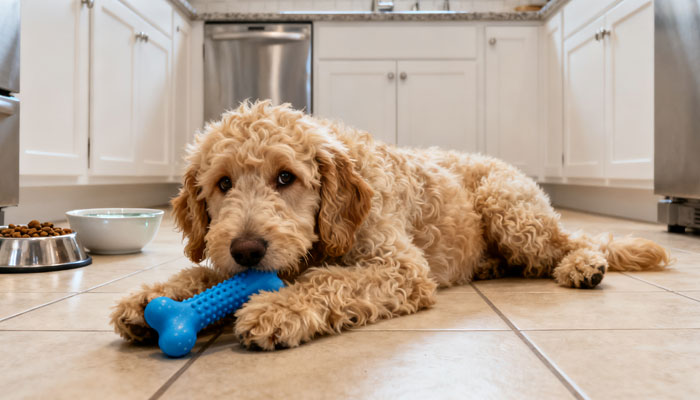Average lifespan of the Goldendoodle

Through being a mix between Golden Retrievers and Poodles, the Goldendoodle has inherited the sweetness and love of Golden Retrievers and the shedding-free characteristic of Poodles and has been up to date gradually becoming a preferred companion dog for many families. The lifespan of Goldendoodles has become a hot topic with the rise of their owners.
I. Average Lifespan of Goldendoodles
The average lifespan of a Goldendoodle is usually from 10 to 15 years, according to a variety of dog research studies, and breeding habits. The main reason for this wider range in comparison with some purebred dogs is hybrid vigor which lessens the risk of health problems.
Small Goldendoodles (weighing under 15 kg) normally have a longer life span since they have less metabolic strain, most of them can live for 12 to 15 years and some can even surpass 15 years if they are healthy.
Goldendoodles of medium size (between 15 to 25 kg) have a lifespan that is a little bit shorter as they normally live from 11 to 14 years. Their physical abilities and weight are in the middle range of small and large Goldendoodles thus their lifespan is also.
Large Goldendoodles (over 25 kg) suffer more from wear and tear of their bones, joints, and even internal organs, and they are the ones that usually live from 10 to 13 years. Keeping them healthy in terms of joints and organs is extremely important.
II. Strategies to Extend a Goldendoodle’ Lifespan
Use good judgment while looking for a breeder of the right kind. Before you decide, ask the breeder to give you the health records of the puppy’s parents, thus proving that both of them have undergone a series of health checks. Do not buy puppies from sources that are not reliable.
Build your own diet plan: In the period of puppyhood use the high protein formulas to promote growth, then gradually change to a low phosphorus, easily digestible food for dogs at an old age. Feeding toxic foods like chocolate, grapes, and onions should be prohibited at all times.
Create a routine for exercise and a healthcare schedule that you do regularly: The level of activity should be determined by size (small breeds indoor activities should be increased, large breeds outdoor walks should be extended), and overexertion in extreme weather (heat or cold) should be avoided.
Be sure and get a thorough check-up every year; make scoring, specialized joint, and heart examinations part of your routine after the dog turns 4, so you are in time to diagnose and treat diseases early.
admin
-
Sale!

Washable Pet Cooling Pad for Cats and Dogs
$10.99Original price was: $10.99.$9.99Current price is: $9.99. This product has multiple variants. The options may be chosen on the product page -
Sale!

Washable Cat Window Hammock Cooling Bed
$23.99Original price was: $23.99.$22.99Current price is: $22.99. -
Sale!

Tropical Amphibian Rainforest Tank, Lizard Cage
$38.99Original price was: $38.99.$36.99Current price is: $36.99. -
Sale!

Silent 4-in-1 Waterproof Charging Dog Hair Trimmer
$49.88Original price was: $49.88.$47.99Current price is: $47.99.